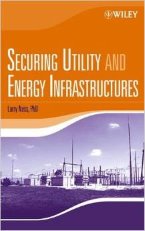 Larry Ness
Larry Ness
Editora Wiley-Interscience
Sinopse: The latest security measures for utility and energy industries Addressing the growing post-9/11 concern about the safety of the utility and energy industries, Securing Utility and Energy Infrastructures presents a detailed blueprint for safeguarding these vital fields. This comprehensive guide discusses how to protect the electric, oil and gas, nuclear, telecommunications, and water industries from a conventional or terrorist attack. Written for anyone who is charged with the safety of these industries, Securing Utility and Energy Infrastructures explains how to look for and monitor potential physical vulnerabilities at a plant or water facility, what contaminants might be introduced to cause a catastrophic event, and how to integrate and perform vulnerability assessments and emergency response plans. This practical manual also examines the differences between a terrorist attack and a conventional mode of attack and the economic impact of each. Securing Utility and Energy Infrastructures contains insightful information on: The latest security technology and tools available, including biotoxicity monitors and cb detection systems Security crisis management planning and security policies, procedures, and guidelines Industry-specific security issues and infrastructure security programs Current federal, state, and private safety efforts and their costs Securing Utility and Energy Infrastructures stresses the importance of a proactive rather than a reactive approach to the safety of utility and energy industries. This text is an essential resource for federal and state utility regulators, industrial hygienists, first responders, Hazmat professionals, safety professionals, utility managers, IT professionals, and the criminal justice community at the federal, state, and local level.
